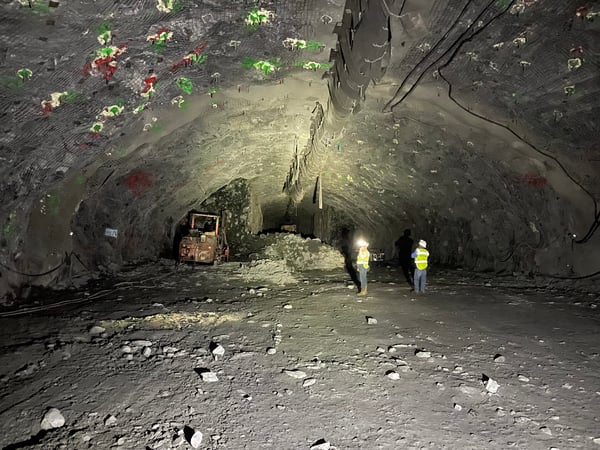What is DUNE?
The Deep Underground Neutrino Experiment (DUNE) is poised to become the largest science experiment in the United States. DUNE’s far detector in Lead, S.D. will consist of four modules. Each of them will be a four-story high Olympic-size pool filled with more than 10,000 tons of ultra-cold liquid argon (below -300 degrees Fahrenheit) and located one mile underground at the Sanford Underground Research Facility (SURF). A powerful particle accelerator at Fermilab near Chicago will produce neutrinos and shoot them through the Earth’s surface to South Dakota. Neutrinos are remarkably elusive particles, and as a result, the vast majority of them traverse the Earth without any interaction. However, a few neutrinos will create signals in the underground detectors. Whether or not these neutrinos have changed their type during their journey to South Dakota will help DUNE resolve the fundamental properties of neutrinos.
What are the main objectives of DUNE in simple terms?
The science of DUNE is to complete our understanding of the fundamental properties of neutrinos, which are the second most common known particles in our universe after light. We still do not know which neutrino type is the lightest or heaviest. Moreover, DUNE could provide an answer as to why there is more matter than antimatter in our universe. Besides science with the neutrino beam, DUNE could even study the potential black hole formation with neutrinos if a supernova occurs in our galaxy while the detectors are active. Finally, the detection of solar neutrinos can be utilized to study the nuclear fusion processes inside our Sun, which provide the energy for life on Earth.
How are South Dakota Mines researchers contributing to DUNE?
Our essential work for DUNE centers around the control of the radioactivity of the detector components inside the underground caverns, as well as the calibration of these detectors. The radiological assays and the computer simulations we perform in our laboratories at South Dakota Mines are paramount to ensure that the rare neutrino signals in DUNE’s liquid argon can be detected and discriminated against unwanted background signals. A correct interpretation of these signals will rely on calibration systems developed at South Dakota Mines. Professors Reichenbacher, Martinez, and Wang lead DUNE’s efforts on radiological assays, simulations, and calibrations supported by a team of two postdoctoral researchers, seven graduate students, and more than 10 undergraduate students. Their groups are also involved in developing the data analysis for supernova and solar neutrinos, as well as beam neutrinos.
What other projects are researchers from South Dakota Mines working on at SURF?
Researchers from South Dakota Mines are contributing significantly to the LZ dark matter experiment (see the main article). Other efforts at SURF focus on CASPAR, the first deep underground particle accelerator in the United States, which is co-led by South Dakota Mines and is contributing to our understanding of the synthesis of the chemical elements in stars like our sun. South Dakota Mines has been involved in the Majorana Demonstrator which developed experimental techniques aimed at finding if neutrinos are their own antiparticles or not. Mines’ geologists and biologists also contribute to understanding the fabric of rock, what core samples tell us about the Earth, understanding the vast heat resources, and studying deep underground microbes.
Neutrinos are remarkably elusive particles, and as a result, the vast majority of them traverse the Earth without any interaction. [RR1]
-1.jpg)

.jpg?width=600&height=450&name=191021-LZtransportUG-0210%20(1).jpg)
